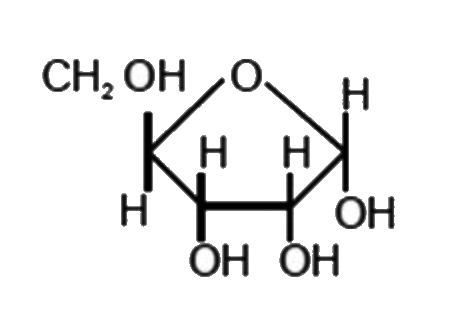Which of the following molecule forms linear polymeric structure due to H-bonding ?
NH3
H2O
HCl
HF
The correct Answer is:D
To determine which molecule forms a linear polymeric structure due to hydrogen bonding, we will analyze each of the given options: NH3, H2O, HCl, and HF.
1. Understanding Hydrogen Bonding:
Hydrogen bonding occurs when a hydrogen atom covalently bonded to a highly electronegative atom (like N, O, or F) experiences an attraction to another electronegative atom. This results in a dipole-dipole interaction that can lead to the formation of polymers.
Hint: Recall that hydrogen bonds are stronger than typical dipole-dipole interactions but weaker than covalent bonds.
2. Analyzing NH3 (Ammonia):
- Structure: NH3 has a trigonal pyramidal shape due to the presence of a lone pair on nitrogen.
- Hydrogen Bonding: NH3 can form hydrogen bonds, but the structure is not linear; it tends to form a network rather than a linear polymer.
Hint: Consider the shape of the molecule when determining if it can form a linear structure.
3. Analyzing H2O (Water):
- Structure: H2O has a bent shape due to the two lone pairs on oxygen.
- Hydrogen Bonding: Water can form hydrogen bonds, but similar to NH3, it does not form a linear polymeric structure; it forms a tetrahedral arrangement.
Hint: Look at the angles between the bonds in the molecule to assess linearity.
4. Analyzing HCl (Hydrochloric Acid):
- Structure: HCl is a simple diatomic molecule.
- Hydrogen Bonding: HCl does not exhibit significant hydrogen bonding because the electronegativity difference between H and Cl is not sufficient to create strong dipole-dipole interactions.
Hint: Check for the presence of significant electronegativity differences to determine hydrogen bonding capability.
5. Analyzing HF (Hydrofluoric Acid):
- Structure: HF can form a linear arrangement when multiple HF molecules interact.
- Hydrogen Bonding: HF exhibits strong hydrogen bonding due to the high electronegativity of fluorine, leading to the formation of linear polymeric structures.
Hint: Consider how the strong hydrogen bonds can lead to a repeating linear pattern in the structure.
Conclusion:
Based on the analysis, the molecule that forms a linear polymeric structure due to hydrogen bonding is HF (Hydrofluoric Acid).
Final Answer: D) HF
Hydrogen bonding occurs when a hydrogen atom covalently bonded to a highly electronegative atom (like N, O, or F) experiences an attraction to another electronegative atom. This results in a dipole-dipole interaction that can lead to the formation of polymers.
- Structure: NH3 has a trigonal pyramidal shape due to the presence of a lone pair on nitrogen.
- Hydrogen Bonding: NH3 can form hydrogen bonds, but the structure is not linear; it tends to form a network rather than a linear polymer.
- Structure: H2O has a bent shape due to the two lone pairs on oxygen.
- Hydrogen Bonding: Water can form hydrogen bonds, but similar to NH3, it does not form a linear polymeric structure; it forms a tetrahedral arrangement.
- Structure: HCl is a simple diatomic molecule.
- Hydrogen Bonding: HCl does not exhibit significant hydrogen bonding because the electronegativity difference between H and Cl is not sufficient to create strong dipole-dipole interactions.
- Structure: HF can form a linear arrangement when multiple HF molecules interact.
- Hydrogen Bonding: HF exhibits strong hydrogen bonding due to the high electronegativity of fluorine, leading to the formation of linear polymeric structures.
Based on the analysis, the molecule that forms a linear polymeric structure due to hydrogen bonding is HF (Hydrofluoric Acid).
Similar Questions
Knowledge Check
Which of the following molecules is not linear?
AO=C=C=C=OBH2C=C=OCHC≡C−C≡CHDHC≡CHWhich of the following is not a linear molecule?
ACO2BC2H2CHCNDH2O
Which of the following molecule has triple bond ?
View SolutionWhich of the following molecules or ions is not linear?
View SolutionWhich of the following molecule has as OO bonds?
View SolutionWhich of the following molecule has as O−O bonds?
View SolutionWhich of the following molecule has no dative bond?
View SolutionWhich of the following molecule represent the given structure?

View Solution